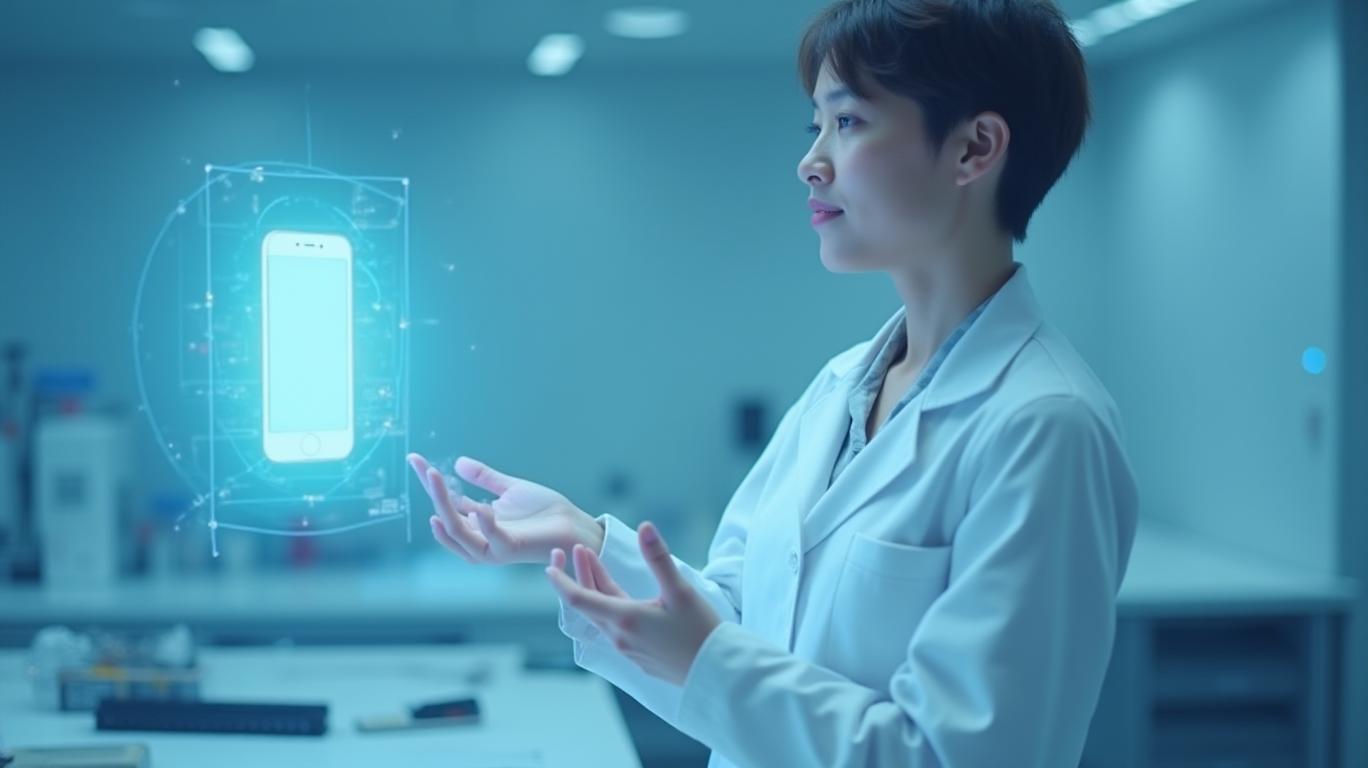OpenAI’s $6.5B Jony Ive Acquisition: A Tectonic Shift in the AI-Hardware Convergence Era
The tech world is witnessing a seismic realignment. OpenAI’s acquisition of Jony Ive’s AI device startup, io, for $6.5 billion—its largest deal to date—marks a bold stride into the AI-native hardware revolution. This move isn’t just about software; it’s a direct challenge to Apple’s design dominance and a clarion call for investors to pivot toward companies merging AI with physical innovation. Let’s dissect why this deal is a game-changer and why investors must act now.

Why This Acquisition is a Paradigm Shift
OpenAI isn’t just buying a startup—it’s acquiring the architect of Apple’s golden age. Jony Ive, the mind behind the iPhone and iPad, brings a design ethos that has defined consumer electronics for decades. Now, his team will fuse this expertise with OpenAI’s generative AI prowess to create devices that transcend traditional screens. The first products, slated for 2026, could include cameras, headphones, or entirely new categories of AI-driven tools.
This isn’t incremental innovation—it’s a new hardware paradigm. OpenAI’s move signals that the era of standalone apps and “smart” peripherals is over. The future belongs to AI-native devices that learn, adapt, and interact with users in intuitive, human-centric ways.
(Note: While OpenAI is private, its $300 billion post-funding valuation contrasts starkly with Apple’s $2.5 trillion market cap. The gap highlights investor confidence in AI-driven disruption.)
Why Apple is in the Crosshairs
Apple’s Achilles’ heel? Its lagging AI capabilities. Despite years of effort, its AI features (e.g., Siri, Vision Pro) pale against rivals like Google’s Gemini or OpenAI’s GPT-5. Meanwhile, OpenAI’s acquisition taps into Apple’s former design genius to create hardware that could eclipse its legacy products.
Consider this: Apple’s iPhone sales growth has stalled, and its AI investments remain fragmented. OpenAI’s partnership with Ive flips the script—design and AI are now one. Apple’s vertically integrated model, once its strength, could become a liability if it can’t integrate AI as seamlessly as OpenAI’s new hardware ecosystem.
(Apple’s stock has stagnated, while AI-hardware plays see soaring valuations—a divergence investors can’t ignore.)
The Investment Thesis: Pivot or Perish
The OpenAI-Ive deal is a canary in the coal mine for tech investors. Here’s why:
1. AI-Hardware Convergence is Inevitable: Devices like the iPhone were born from hardware-software synergy. Now, AI is the new glue. Companies like OpenAI, which are vertically integrating AI into physical products, will dominate.
2. Apple’s Decline is a Slow-Motion Trainwreck: Overvalued giants clinging to outdated models (looking at you, AAPL) risk obsolescence. Their stock prices reflect complacency.
3. New Leaders Will Emerge: Startups and firms like OpenAI, Physical Intelligence (OpenAI’s $2.4B robotics partner), and Meta’s AR veterans (e.g., CK Kalinowski) are the vanguards of this shift.
Investment Playbook
- Buy: Companies merging AI with hardware (e.g., OpenAI-backed ventures, robotics stocks like iRobot, or design-first innovators like LoveFrom’s ecosystem partners).
- Avoid: Overvalued “tech titans” (AAPL, MSFT) unless they prove they can reinvent themselves around AI-native hardware.
- Watch: The 2026 product launch window—success here could trigger a mass exodus from legacy platforms.
Risks and Realities
No revolution is risk-free. OpenAI faces hurdles:
- Execution: Past failures like Humane’s Pin device loom large.
- Regulatory Scrutiny: Monopolistic concerns may delay the acquisition’s close.
- Competitor Pushback: Google and Anthropic are doubling down on hardware too.
But the stakes are too high to ignore. OpenAI’s $6.5B bet isn’t just about winning—it’s about owning the future.
Conclusion: The AI-Hardware Era is Here—Investors, Choose Sides
The OpenAI-Jony Ive alliance is a declaration of war on the status quo. Investors have a choice:
- Double down on legacy tech (AAPL, etc.) at the risk of obsolescence.
- Embrace the AI-native revolution and profit from the next wave of hardware innovation.
The writing is on the wall. The iPhone’s reign is ending—and the next era’s crown is being forged in San Francisco’s labs. Don’t wait for 2026 to act.
(OpenAI’s hardware hires have surged 300% since 2023, while Apple’s AI team expansion trails—proof of where the momentum lies.)
Act now, or risk being left behind.

Comments
No comments yet